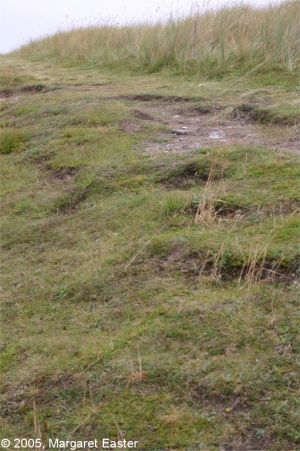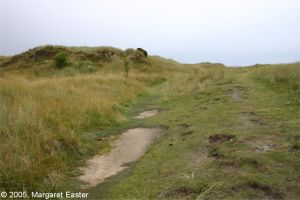Holy Island (Lindisfarne), Northumberland |
|
||
|
In the summer of 2005 we returned to a favourite location, Holy Island (Lindisfarne), but this time to collect thyme for the Creeping Thyme DNA Study, with permits from English Nature and from the local landowners. We found thyme growing in two sites on the north of the island, on the Castle mound in the south east of the island and at the Heugh in the south west. The growing conditions at the various sites range from rabbit grazed grass near the lime kilns above Coves Bay in the north, the sand and stones of the Links, also above Coves Bay, to the short grass and rocks of the Castle Mound and the Heugh. The LinksThe area above Coves Bay on the north of Holy Island is comprised of sand dunes and a flat area with bare sandy soil and stones, or rabbit grazed grass with eroded margins. There are numerous colonies of thyme, growing both in the grass and in the sandy soil. To see an enlarged version of a picture click on the relevant picture. |
|||
|
|
||





